Plotted, Shot, and Painted: Cultural Representations of Biblical Women, Second Revised Edition
Published: Oct 2012
£25.00
Plotted, Shot, and Painted stakes out new territory for feminist biblical criticism. It considers what happens to biblical women in popular culture, in art and in film, and it foregrounds questions about how gender interests affect interpretation and about the roles and responsibilities of commentators and readers. This second revised edition contains an additional chapter, 'Lot and his Daughters', and an expanded chapter on Delilah.
Plotted, Shot, and Painted: Cultural Representations of Biblical Women, Second Revised Edition
£25.00
Plotted, Shot, and Painted stakes out new territory for feminist biblical criticism. It considers what happens to biblical women in popular culture, in art and in film, and it foregrounds questions about how gender interests affect interpretation and about the roles and responsibilities of commentators and readers. This second revised edition contains an additional chapter, 'Lot and his Daughters', and an expanded chapter on Delilah.
Isaiah: The Prophet and His Book
Published: July 2012
£21.00
The book of Isaiah presents one of the most challenging pieces of literature in the Hebrew Bible. Over a period of some four hundred years (from the end of the eighth century down to the end of the fourth century BCE), the great prophet Isaiah and his disciples in the Assyrian period, as well as later scholars in Babylonian and Persian times, worked on this marvellous prophetic text. In its final form it resembles a mediaeval cathedral constructed by many gifted people across the centuries. Each piece has its own history, place and function in the whole structure.
In this lucid study, Berges interprets the scroll of Isaiah as a 'literal cathedral', written by many hands and empowered by the experience of sorrow and disaster, liberation and joy. In the centre of the book (Isaiah 36 —39) and of its theology stands the threat and redemption of Zion. The nations that in the first part were taking action against God's city are invited to join the exiled and dispersed people of Israel as it travels home. The reader too is called to journey the same path and to join the congregation of Israel and the nations on their way to the New Jerusalem — not in heaven but on a renewed earth.
Methodologically, the book combines synchronic and diachronic perspectives and paves the way to a fruitful conversation between them. The vast reception history of the Book of Isaiah in the Septuagint, the New Testament, and in rabbinic and Christian traditions, as well as in painting and music, is also illustrated by some of the most illuminating examples.
Isaiah: The Prophet and His Book
£21.00
The book of Isaiah presents one of the most challenging pieces of literature in the Hebrew Bible. Over a period of some four hundred years (from the end of the eighth century down to the end of the fourth century BCE), the great prophet Isaiah and his disciples in the Assyrian period, as well as later scholars in Babylonian and Persian times, worked on this marvellous prophetic text. In its final form it resembles a mediaeval cathedral constructed by many gifted people across the centuries. Each piece has its own history, place and function in the whole structure.
In this lucid study, Berges interprets the scroll of Isaiah as a 'literal cathedral', written by many hands and empowered by the experience of sorrow and disaster, liberation and joy. In the centre of the book (Isaiah 36 —39) and of its theology stands the threat and redemption of Zion. The nations that in the first part were taking action against God's city are invited to join the exiled and dispersed people of Israel as it travels home. The reader too is called to journey the same path and to join the congregation of Israel and the nations on their way to the New Jerusalem — not in heaven but on a renewed earth.
Methodologically, the book combines synchronic and diachronic perspectives and paves the way to a fruitful conversation between them. The vast reception history of the Book of Isaiah in the Septuagint, the New Testament, and in rabbinic and Christian traditions, as well as in painting and music, is also illustrated by some of the most illuminating examples.
Paradoxes of Paradise: Identity and Difference in the Song of Songs, Second Edition
Published: May 2011
£22.50
Rabbi Akiba is famously reported to have said, 'Heaven forbid that any one in Israel ever disputed that the Song of Songs is holy, for the whole world is not worth the day on which the Song of Songs was given to Israel, for all the writings are holy, but the Song of Songs is the Holy of Holies'. This book is an extended elaboration of Rabbi Akiba's statement. It argues that the Song is a Hellenistic composition, drawing on the resources of ancient Near Eastern erotic poetry and characterized by a complex though fragile unity.
Through the metaphors, the lovers progressively see themselves reflected in each other, as well as in the world about them and the poetry of love. The poem celebrates the land of Israel in spring, an ideal humanity, and a perfected language. It culminates in the contestation of love and death, and the assertion that only love survives the exigencies of time.
The pervasive ambiguity of the Song, in which one never quite knows what happens, is related to the ambivalence of beauty, which is closely related to ugliness. Hence the surrealist imagery of the Song verges upon the grotesque and stretches the resources of our imagination. Through a detailed comparison with the Garden of Eden story, Landy argues that the Song is a vision of paradise seen from the outside, through the ironic poetic gaze, in a world potentially hostile or indifferent.
Paradoxes of Paradise: Identity and Difference in the Song of Songs, Second Edition
£22.50
Rabbi Akiba is famously reported to have said, 'Heaven forbid that any one in Israel ever disputed that the Song of Songs is holy, for the whole world is not worth the day on which the Song of Songs was given to Israel, for all the writings are holy, but the Song of Songs is the Holy of Holies'. This book is an extended elaboration of Rabbi Akiba's statement. It argues that the Song is a Hellenistic composition, drawing on the resources of ancient Near Eastern erotic poetry and characterized by a complex though fragile unity.
Through the metaphors, the lovers progressively see themselves reflected in each other, as well as in the world about them and the poetry of love. The poem celebrates the land of Israel in spring, an ideal humanity, and a perfected language. It culminates in the contestation of love and death, and the assertion that only love survives the exigencies of time.
The pervasive ambiguity of the Song, in which one never quite knows what happens, is related to the ambivalence of beauty, which is closely related to ugliness. Hence the surrealist imagery of the Song verges upon the grotesque and stretches the resources of our imagination. Through a detailed comparison with the Garden of Eden story, Landy argues that the Song is a vision of paradise seen from the outside, through the ironic poetic gaze, in a world potentially hostile or indifferent.
On Earth as it is in Heaven: Temple Symbolism in the New Testament
Published: Jun 2009
£12.50
As more and more is being discovered about the beginnings of Christianity, a whole new understanding of the context of Christian origins is emerging. Any serious student now needs a knowledge of the traditions of the temple. This book, a supplement to Margaret Barker's The Gate of Heaven: The History and Symbolism of the Temple in Jerusalem, breaks further new ground, showing how the symbols and rituals of the temple shaped the lives of the early Christians, and illustrates the striking relevance of temple theology to the New Testament.
The influence of the temple cult has to be reconstructed by drawing on the increasing number of non-biblical texts now available. These include those written in the early churches; fragments from among the Dead Sea Scrolls; and Jewish texts written in the early Christian period. Piece by piece the world of the temple is emerging from this material. Through this close study of the Pseudepigrapha and other non-canonical writings, Margaret Barker examines four symbols of temple theology: Light, Life, Blood, and the Robes of Glory. She shows how details missing from the Old Testament descriptions can be recovered from other ancient texts to throw new light upon many significant passages of the Bible.
This is a reprint of the volume published by T. & T. Clark in 1995.
On Earth as it is in Heaven: Temple Symbolism in the New Testament
£12.50
As more and more is being discovered about the beginnings of Christianity, a whole new understanding of the context of Christian origins is emerging. Any serious student now needs a knowledge of the traditions of the temple. This book, a supplement to Margaret Barker's The Gate of Heaven: The History and Symbolism of the Temple in Jerusalem, breaks further new ground, showing how the symbols and rituals of the temple shaped the lives of the early Christians, and illustrates the striking relevance of temple theology to the New Testament.
The influence of the temple cult has to be reconstructed by drawing on the increasing number of non-biblical texts now available. These include those written in the early churches; fragments from among the Dead Sea Scrolls; and Jewish texts written in the early Christian period. Piece by piece the world of the temple is emerging from this material. Through this close study of the Pseudepigrapha and other non-canonical writings, Margaret Barker examines four symbols of temple theology: Light, Life, Blood, and the Robes of Glory. She shows how details missing from the Old Testament descriptions can be recovered from other ancient texts to throw new light upon many significant passages of the Bible.
This is a reprint of the volume published by T. & T. Clark in 1995.
The Gate of Heaven: The History and Symbolism of the Temple in Jerusalem
Published: Mar 2008
£20.00
In this book, first published in 1991, the prolific and innovative British biblical scholar Margaret Barker sets out to explore the origins and the afterlife of traditions about the Temple in Judaism. Using evidence from the deutero-canonical and pseudepigraphic texts, Qumran and rabbinic material, as well as early Christian texts and liturgies, she advances a host of radical and suggestive theories, including the following:
1. Apocalyptic writing was the temple tradition.
2. Temple buildings were aligned to establish a solar calendar, thus explaining the astronomical texts incorporated in 1 Enoch
3. The temple symbolism of priest and sanctuary antedated the Eden stories of Genesis.
4. The temple buildings depicted heaven and earth separated by a veil of created matter.
5. The throne visions, the basis of the later Merkavah mysticism, originated as high priestly sanctuary experiences, first attested in Isaiah but originating in the royal cult when king figures passed beyond the temple veil from earth into heaven, from immortality to the resurrected state, and then returned.
6. The Day of the Lord or the Day of Judgment was the myth of the Day of Atonement and atonement was the rite of healing and recreation rather than propitiation
7. A characteristic concept of time and eternity was crucial to understanding this material as the area beyond the temple veil was beyond time.
8. Much temple symbolism survived in Gnostic texts, suggesting that the bitterness apparent in many of them derived from the upheavals and exclusions which followed the establishment of the second temple.
The Gate of Heaven: The History and Symbolism of the Temple in Jerusalem
£20.00
In this book, first published in 1991, the prolific and innovative British biblical scholar Margaret Barker sets out to explore the origins and the afterlife of traditions about the Temple in Judaism. Using evidence from the deutero-canonical and pseudepigraphic texts, Qumran and rabbinic material, as well as early Christian texts and liturgies, she advances a host of radical and suggestive theories, including the following:
1. Apocalyptic writing was the temple tradition.
2. Temple buildings were aligned to establish a solar calendar, thus explaining the astronomical texts incorporated in 1 Enoch
3. The temple symbolism of priest and sanctuary antedated the Eden stories of Genesis.
4. The temple buildings depicted heaven and earth separated by a veil of created matter.
5. The throne visions, the basis of the later Merkavah mysticism, originated as high priestly sanctuary experiences, first attested in Isaiah but originating in the royal cult when king figures passed beyond the temple veil from earth into heaven, from immortality to the resurrected state, and then returned.
6. The Day of the Lord or the Day of Judgment was the myth of the Day of Atonement and atonement was the rite of healing and recreation rather than propitiation
7. A characteristic concept of time and eternity was crucial to understanding this material as the area beyond the temple veil was beyond time.
8. Much temple symbolism survived in Gnostic texts, suggesting that the bitterness apparent in many of them derived from the upheavals and exclusions which followed the establishment of the second temple.
The Illegitimacy of Jesus: A Feminist Theological Interpretation of the Infancy Narratives, Expanded Twentieth Anniversary Edition
Published: Oct 2006
Price range: £18.50 through £45.00
This work of impeccable New Testament scholarship was a sensation when it was first published in 1987. Jane Schaberg argued that Matthew and Luke were aware that Jesus had been conceived illegitimately, probably as a result of a rape of Mary, and had left in their Gospels some hints of that knowledge, even though their main purpose was to explore the theological significance of Jesus' birth. By having the Messiah born out of the exploitation of a woman of the poor, God demonstrates the vindication of the oppressed in a truly miraculous manner. Exegetical precision, theological passion, and an exquisite prose style are combined in this landmark book, whose importance is yet to be fully recognized.
Perhaps not surprisingly, the book and its author were vilified, even though scholarly reviewers found much to praise in it, and it still features on many classroom reading lists. For this Anniversary Edition, we have added Schaberg's own disturbing account of the reception of the book, and two extensive responses--one respectfully dissenting, one fully supportive--from other New Testament scholars.
The Illegitimacy of Jesus: A Feminist Theological Interpretation of the Infancy Narratives, Expanded Twentieth Anniversary Edition
Price range: £18.50 through £45.00
This work of impeccable New Testament scholarship was a sensation when it was first published in 1987. Jane Schaberg argued that Matthew and Luke were aware that Jesus had been conceived illegitimately, probably as a result of a rape of Mary, and had left in their Gospels some hints of that knowledge, even though their main purpose was to explore the theological significance of Jesus' birth. By having the Messiah born out of the exploitation of a woman of the poor, God demonstrates the vindication of the oppressed in a truly miraculous manner. Exegetical precision, theological passion, and an exquisite prose style are combined in this landmark book, whose importance is yet to be fully recognized.
Perhaps not surprisingly, the book and its author were vilified, even though scholarly reviewers found much to praise in it, and it still features on many classroom reading lists. For this Anniversary Edition, we have added Schaberg's own disturbing account of the reception of the book, and two extensive responses--one respectfully dissenting, one fully supportive--from other New Testament scholars.
Theory and Method in Biblical and Cuneiform Law: Revision, Interpolation, and Development
Published: May 2006
£15.00
This seminal work, first published by Sheffield Academic Press in the JSOT Supplement Series, remains in demand among scholars of biblical and cuneiform law, as well as among all those interested in the Pentateuchal traditions. The essays in the collection focus on two crucial topics that have been too much neglected in recent debate on the formation of the Pentateuch: (1) biblical law, and the development of Israelite legal institutions, and (2) the significance of ancient Near Eastern law as a model for the composition and editorial history of the Pentateuch.
To correct the imbalance, the contributors to this volume investigate whether the biblical and cuneiform legal corpora underwent a process of literary revision and interpolation. If so, what is the evidence for it, and how did such revision take place? If not, how are the textual phenomena to be explained?
The contributors are: Raymond Westbrook, Bernard M. Levinson, Samuel Greengus, Martin Buss, Sophie Lafont, Victor H. Matthews, William Morrow, Dale Patrick and Eckart Otto.
Theory and Method in Biblical and Cuneiform Law: Revision, Interpolation, and Development
£15.00
This seminal work, first published by Sheffield Academic Press in the JSOT Supplement Series, remains in demand among scholars of biblical and cuneiform law, as well as among all those interested in the Pentateuchal traditions. The essays in the collection focus on two crucial topics that have been too much neglected in recent debate on the formation of the Pentateuch: (1) biblical law, and the development of Israelite legal institutions, and (2) the significance of ancient Near Eastern law as a model for the composition and editorial history of the Pentateuch.
To correct the imbalance, the contributors to this volume investigate whether the biblical and cuneiform legal corpora underwent a process of literary revision and interpolation. If so, what is the evidence for it, and how did such revision take place? If not, how are the textual phenomena to be explained?
The contributors are: Raymond Westbrook, Bernard M. Levinson, Samuel Greengus, Martin Buss, Sophie Lafont, Victor H. Matthews, William Morrow, Dale Patrick and Eckart Otto.
The Lost Prophet: The Book of Enoch and Its Influence on Christianity
Published: July 2005
£15.00
Reading the Book of Enoch unleashes a new understanding of early Christianity and one that is uncannily relevant to the late twentieth century. Though neglected and almost forgotten by the Church for fifteen hundred years, the Book of Enoch was one of the most important writings of the pre-Christian period and was kept and used by the early Church.
It represents supremely the mystical element in the Judaeo-Christian tradition, with strange and powerful symbolism, and heavenly visions of the Last Judgement. Its treatment of the problem of evil, of humankind's relationship with the creation, of the role of the expected Messiah and of other key themes in Judaism and Christianity challenges many traditional assumptions and throws dramatic new light on our understanding of Jesus and his message.
The Lost Prophet is an exciting and thought provoking book which should be read by everyone interested in the foundations of Christianity.
The Lost Prophet: The Book of Enoch and Its Influence on Christianity
£15.00
Reading the Book of Enoch unleashes a new understanding of early Christianity and one that is uncannily relevant to the late twentieth century. Though neglected and almost forgotten by the Church for fifteen hundred years, the Book of Enoch was one of the most important writings of the pre-Christian period and was kept and used by the early Church.
It represents supremely the mystical element in the Judaeo-Christian tradition, with strange and powerful symbolism, and heavenly visions of the Last Judgement. Its treatment of the problem of evil, of humankind's relationship with the creation, of the role of the expected Messiah and of other key themes in Judaism and Christianity challenges many traditional assumptions and throws dramatic new light on our understanding of Jesus and his message.
The Lost Prophet is an exciting and thought provoking book which should be read by everyone interested in the foundations of Christianity.
The Bible and the Modern World
Published: July 2005
£13.50
In the world of scholarship, the Bible is usually viewed as a ancient book, a product of the past, an inheritance, a heritage; it is essentially a book with origins. These lectures adopt an opposite starting point: that the Bible is in the modern world, a physical object strewn about the world of today, an in-print book that real people are reading at this very minute.
So the focus here is not on the origins of the Bible but on its reception, not of what its authors may have intended it to mean, but on what its readers today take it to mean. In conversational style, David Clines enquires after the Bible and the Academy, the Bible and Culture, the Bible and the Public, the Bible and the Church —and offers his own reflections and admonitions.
This is a corrected reprint of the 1997 edition.
The Bible and the Modern World
£13.50
In the world of scholarship, the Bible is usually viewed as a ancient book, a product of the past, an inheritance, a heritage; it is essentially a book with origins. These lectures adopt an opposite starting point: that the Bible is in the modern world, a physical object strewn about the world of today, an in-print book that real people are reading at this very minute.
So the focus here is not on the origins of the Bible but on its reception, not of what its authors may have intended it to mean, but on what its readers today take it to mean. In conversational style, David Clines enquires after the Bible and the Academy, the Bible and Culture, the Bible and the Public, the Bible and the Church —and offers his own reflections and admonitions.
This is a corrected reprint of the 1997 edition.
The Older Testament: The Survival of Themes from the Ancient Royal Cult in Sectarian Judaism and Early Christianity
Published: July 2005
£25.00
The Older Testament is a radically new approach to many problems of both Old and New Testaments. It takes as a basis the theology of the book of Enoch, lost to western Christendom for many centuries, but here recognized as providing the most consistent set of clues to the nature of Israel's pre-exilic religion. Reformers and editors of the Second Temple period sought to remove from the biblical texts all traces of the older ways, which now survive only in the apparently bizarre themes and imagery of certain Pseudepigrapha.
Margaret Barker traces some of the ways in which the Deuteronomic standpoint came to dominate future readings of the Hebrew Bible as well as scholarly conceptions of Israel's religious development. Her reconstruction of the pre-Deuteronomic religion throws a startling light on much of the imagery of the New Testament and shows how closely the earlier Christian expectations were based upon the ancient royal cult in Jerusalem.
This book represents an important and original contribution to our understanding of Judaism and early Christianity.
The Older Testament: The Survival of Themes from the Ancient Royal Cult in Sectarian Judaism and Early Christianity
£25.00
The Older Testament is a radically new approach to many problems of both Old and New Testaments. It takes as a basis the theology of the book of Enoch, lost to western Christendom for many centuries, but here recognized as providing the most consistent set of clues to the nature of Israel's pre-exilic religion. Reformers and editors of the Second Temple period sought to remove from the biblical texts all traces of the older ways, which now survive only in the apparently bizarre themes and imagery of certain Pseudepigrapha.
Margaret Barker traces some of the ways in which the Deuteronomic standpoint came to dominate future readings of the Hebrew Bible as well as scholarly conceptions of Israel's religious development. Her reconstruction of the pre-Deuteronomic religion throws a startling light on much of the imagery of the New Testament and shows how closely the earlier Christian expectations were based upon the ancient royal cult in Jerusalem.
This book represents an important and original contribution to our understanding of Judaism and early Christianity.
Interested Parties: The Ideology of Writers and Readers of the Hebrew BIble
Price range: £17.50 through £50.00
There is a twin focus in this volume. The title of a keynote essay—‘Why Is There a Song of Songs, and What Does It Do to You If You Read It?’—hints at it. The focus is equally on the ideologies of the writers of the Hebrew Bible, who brought the text into being, and on the ideologies of its readers, who are being shaped by the text at the same moment that they are shaping it in their own image.
Uncovering the ideologies of writers are readers is the project of this book, calling for a step beyond the usual scholarly goal of understanding—to a practice of the art of critique.
Among the other chapters in this challenging book are:
• The Ten Commandments: Reading from Left to Right
• Metacommentating Amos
• Haggai’s Temple, Constructed, Deconstructed and Reconstructed
• David the Man: The Construction of Masculinity in the Hebrew Bible
• Psalm 2 and the MLF (Moabite Liberation Front)
• God in the Pentateuch: Reading against the Grain
This is a reprint of the original 1995 edition.
Interested Parties: The Ideology of Writers and Readers of the Hebrew BIble
Price range: £17.50 through £50.00
There is a twin focus in this volume. The title of a keynote essay—‘Why Is There a Song of Songs, and What Does It Do to You If You Read It?’—hints at it. The focus is equally on the ideologies of the writers of the Hebrew Bible, who brought the text into being, and on the ideologies of its readers, who are being shaped by the text at the same moment that they are shaping it in their own image.
Uncovering the ideologies of writers are readers is the project of this book, calling for a step beyond the usual scholarly goal of understanding—to a practice of the art of critique.
Among the other chapters in this challenging book are:
• The Ten Commandments: Reading from Left to Right
• Metacommentating Amos
• Haggai’s Temple, Constructed, Deconstructed and Reconstructed
• David the Man: The Construction of Masculinity in the Hebrew Bible
• Psalm 2 and the MLF (Moabite Liberation Front)
• God in the Pentateuch: Reading against the Grain
This is a reprint of the original 1995 edition.
What Does Eve Do to Help? And Other Readerly Questions to the Old Testament
£50.00
Readerly questions are raised when readers are explicitly and programmatically brought into the process of interpreting texts. Traditionally, the reader and readerly interest and identities have been screened out when we have set about interpreting texts, and we have set our sights on attaining an interpretation that should be as objective as possible.
Things are rather different now. Not only is quest for objective interpretation seen as chimaera, but the rewards of unabashed readerly interpretations that foreground the process of reading and the context of the reader have now been shown to be very well worth seeking. That reader-response approach characterizes this collection of six essays, prefaced by an introduction to reader-response criticism.
The essays for the most part read in their original form to meetings of the Society of Biblical Literature, are: What Does Eve Do To Help? and other Irredeemably Androcentric Orientations in Genesis 1-3; What Happens in Genesis; The Ancestor in Danger: But Not the Same Danger; The Old Testament Histories: A Reader's Guide; Deconstructing the Book of Job; and Nehemiah Memoir: The perils of Autobiography.
This volume is a reprint of the original 1990 edition.
What Does Eve Do to Help? And Other Readerly Questions to the Old Testament
£50.00
Readerly questions are raised when readers are explicitly and programmatically brought into the process of interpreting texts. Traditionally, the reader and readerly interest and identities have been screened out when we have set about interpreting texts, and we have set our sights on attaining an interpretation that should be as objective as possible.
Things are rather different now. Not only is quest for objective interpretation seen as chimaera, but the rewards of unabashed readerly interpretations that foreground the process of reading and the context of the reader have now been shown to be very well worth seeking. That reader-response approach characterizes this collection of six essays, prefaced by an introduction to reader-response criticism.
The essays for the most part read in their original form to meetings of the Society of Biblical Literature, are: What Does Eve Do To Help? and other Irredeemably Androcentric Orientations in Genesis 1-3; What Happens in Genesis; The Ancestor in Danger: But Not the Same Danger; The Old Testament Histories: A Reader's Guide; Deconstructing the Book of Job; and Nehemiah Memoir: The perils of Autobiography.
This volume is a reprint of the original 1990 edition.
On the Way to the Postmodern: Volume I
£50.00
In the 50 chapters of these two volumes, David J. A. Clines presents a series of discourses, spanning three decades, from an increasingly postmodern perspective. Rather than using only methods of deconstruction, he combines traditional methods with postmodern ideas of analysis, resulting in a substantial reading of the Hebrew Bible.
Clines’s selected sequence of articles and papers—ten of them not previously published—displays a golden thread of a scholar’s journey in biblical interpretation. Some of the papers, like 'The Evidence for an Autumnal New Year in Pre-exilic Israel Reconsidered', are far from postmodern in their outlook, and sit in intriguing juxtaposition with others such as 'The Postmodern Adventure in Biblical Studies'.
The essays are organized in eight sections;
- Method, Literature, History (Vol. I.),
- Theology, Language, Psalms, Job, and, entertainingly, Divertimenti (Vol. II). They include 'Reading Esther from Left to Right', 'Beyond Synchronic Diachronic', 'Story and Poem: The Old Testament as Literature and as Scripture', 'In Search of the Indian Job', and 'Philology and Power'.
Further items in this first volume to highlight are:
- Possibilities and Priorities of Biblical Interpretation in an International Perspective
- What Has (and Has Not) Happened at SBL International Meetings
- The Force of the Text: A Response to Tamara C. Eskenazi
- In Quest of the Historical Mordecai
On the Way to the Postmodern: Volume I
£50.00
In the 50 chapters of these two volumes, David J. A. Clines presents a series of discourses, spanning three decades, from an increasingly postmodern perspective. Rather than using only methods of deconstruction, he combines traditional methods with postmodern ideas of analysis, resulting in a substantial reading of the Hebrew Bible.
Clines’s selected sequence of articles and papers—ten of them not previously published—displays a golden thread of a scholar’s journey in biblical interpretation. Some of the papers, like 'The Evidence for an Autumnal New Year in Pre-exilic Israel Reconsidered', are far from postmodern in their outlook, and sit in intriguing juxtaposition with others such as 'The Postmodern Adventure in Biblical Studies'.
The essays are organized in eight sections;
- Method, Literature, History (Vol. I.),
- Theology, Language, Psalms, Job, and, entertainingly, Divertimenti (Vol. II). They include 'Reading Esther from Left to Right', 'Beyond Synchronic Diachronic', 'Story and Poem: The Old Testament as Literature and as Scripture', 'In Search of the Indian Job', and 'Philology and Power'.
Further items in this first volume to highlight are:
- Possibilities and Priorities of Biblical Interpretation in an International Perspective
- What Has (and Has Not) Happened at SBL International Meetings
- The Force of the Text: A Response to Tamara C. Eskenazi
- In Quest of the Historical Mordecai
On the Way to the Postmodern: Volume II
£50.00
In the 50 chapters of these two volumes, David J. A. Clines presents a series of discourses, spanning three decades, from an increasingly postmodern perspective. Rather than using only methods of deconstruction, he combines traditional methods with postmodern ideas of analysis, resulting in a substantial reading of the Hebrew Bible.
Clines’s selected sequence of articles and papers—ten of them not previously published—displays a golden thread of a scholar’s journey in biblical interpretation. Some of the papers, like 'The Evidence for an Autumnal New Year in Pre-exilic Israel Reconsidered', are far from postmodern in their outlook, and sit in intriguing juxtaposition with others such as 'The Postmodern Adventure in Biblical Studies'.
The essays are organized in eight sections;
- Method, Literature, History (Vol. I.),
- Theology, Language, Psalms, Job, and, entertainingly, Divertimenti (Vol. II). They include 'Reading Esther from Left to Right', 'Beyond Synchronic Diachronic', 'Story and Poem: The Old Testament as Literature and as Scripture', 'In Search of the Indian Job', and 'Philology and Power'.
Further items in this second volume to highlight are:
Sacred Space, Holy Places and Suchlike
The Dictionary of Classical Hebrew
Universal Dominion in Psalm 2?
False Naivety in the Prologue to Job
New Directions in Pooh Studies.
This volume is a reprint of the original 1998 edition.
On the Way to the Postmodern: Volume II
£50.00
In the 50 chapters of these two volumes, David J. A. Clines presents a series of discourses, spanning three decades, from an increasingly postmodern perspective. Rather than using only methods of deconstruction, he combines traditional methods with postmodern ideas of analysis, resulting in a substantial reading of the Hebrew Bible.
Clines’s selected sequence of articles and papers—ten of them not previously published—displays a golden thread of a scholar’s journey in biblical interpretation. Some of the papers, like 'The Evidence for an Autumnal New Year in Pre-exilic Israel Reconsidered', are far from postmodern in their outlook, and sit in intriguing juxtaposition with others such as 'The Postmodern Adventure in Biblical Studies'.
The essays are organized in eight sections;
- Method, Literature, History (Vol. I.),
- Theology, Language, Psalms, Job, and, entertainingly, Divertimenti (Vol. II). They include 'Reading Esther from Left to Right', 'Beyond Synchronic Diachronic', 'Story and Poem: The Old Testament as Literature and as Scripture', 'In Search of the Indian Job', and 'Philology and Power'.
Further items in this second volume to highlight are:
Sacred Space, Holy Places and Suchlike
The Dictionary of Classical Hebrew
Universal Dominion in Psalm 2?
False Naivety in the Prologue to Job
New Directions in Pooh Studies.
This volume is a reprint of the original 1998 edition.


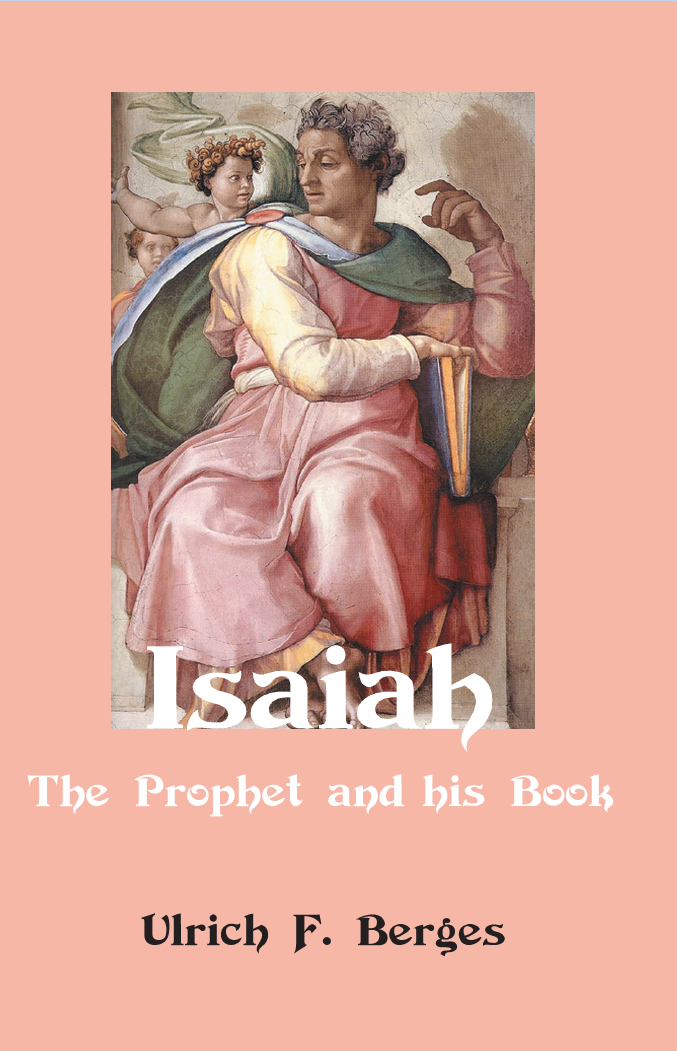
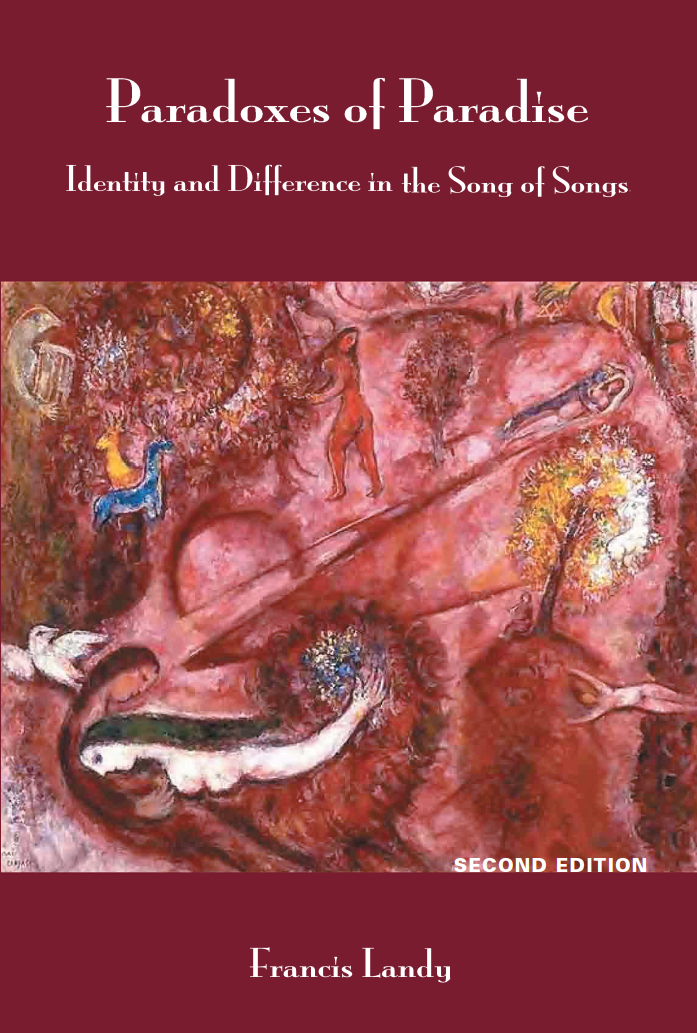




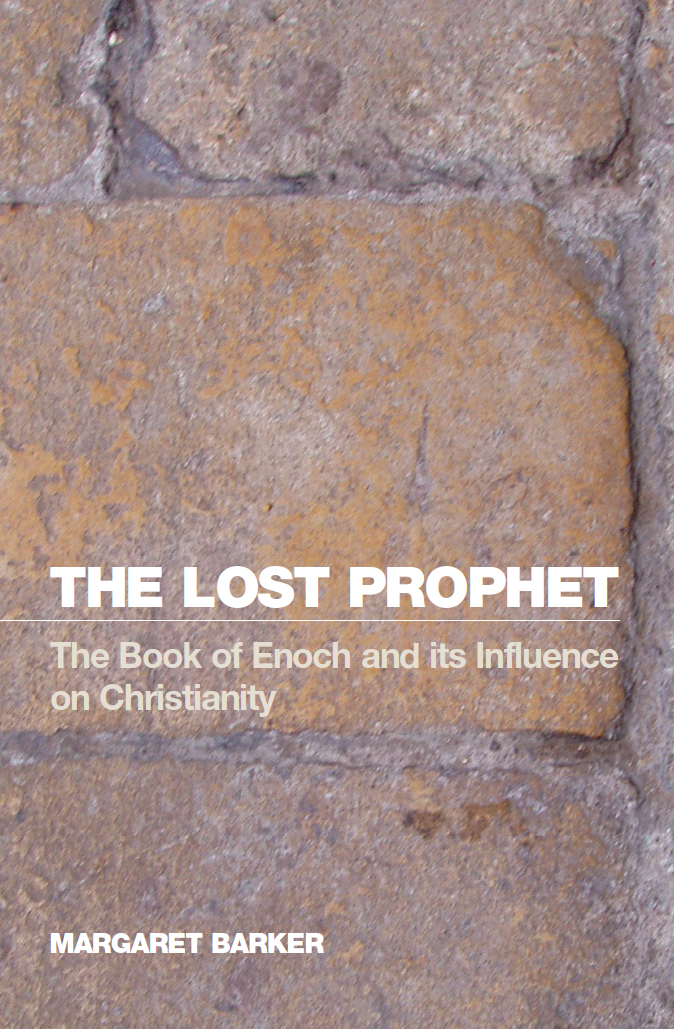
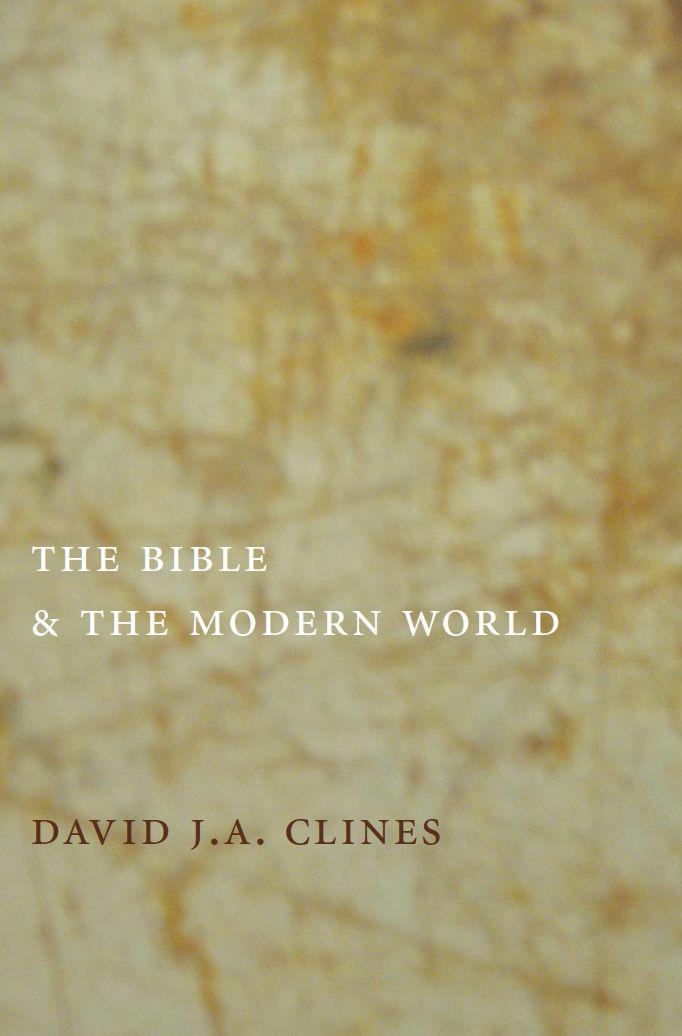

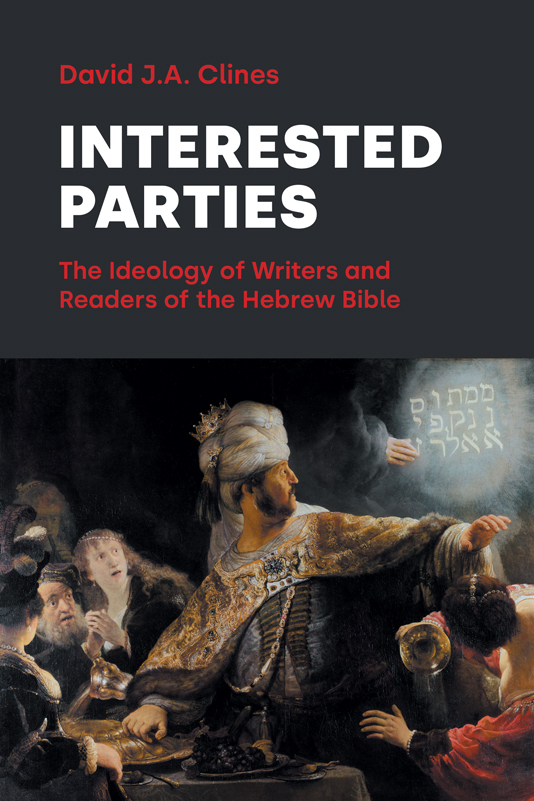
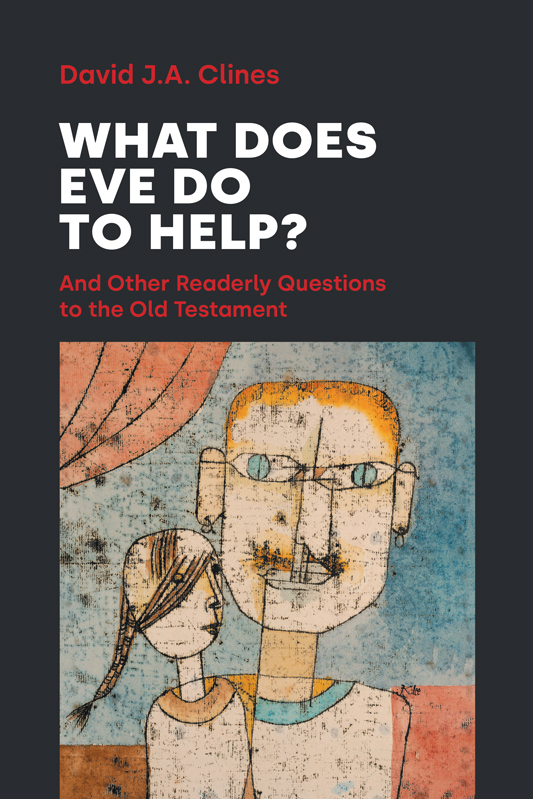
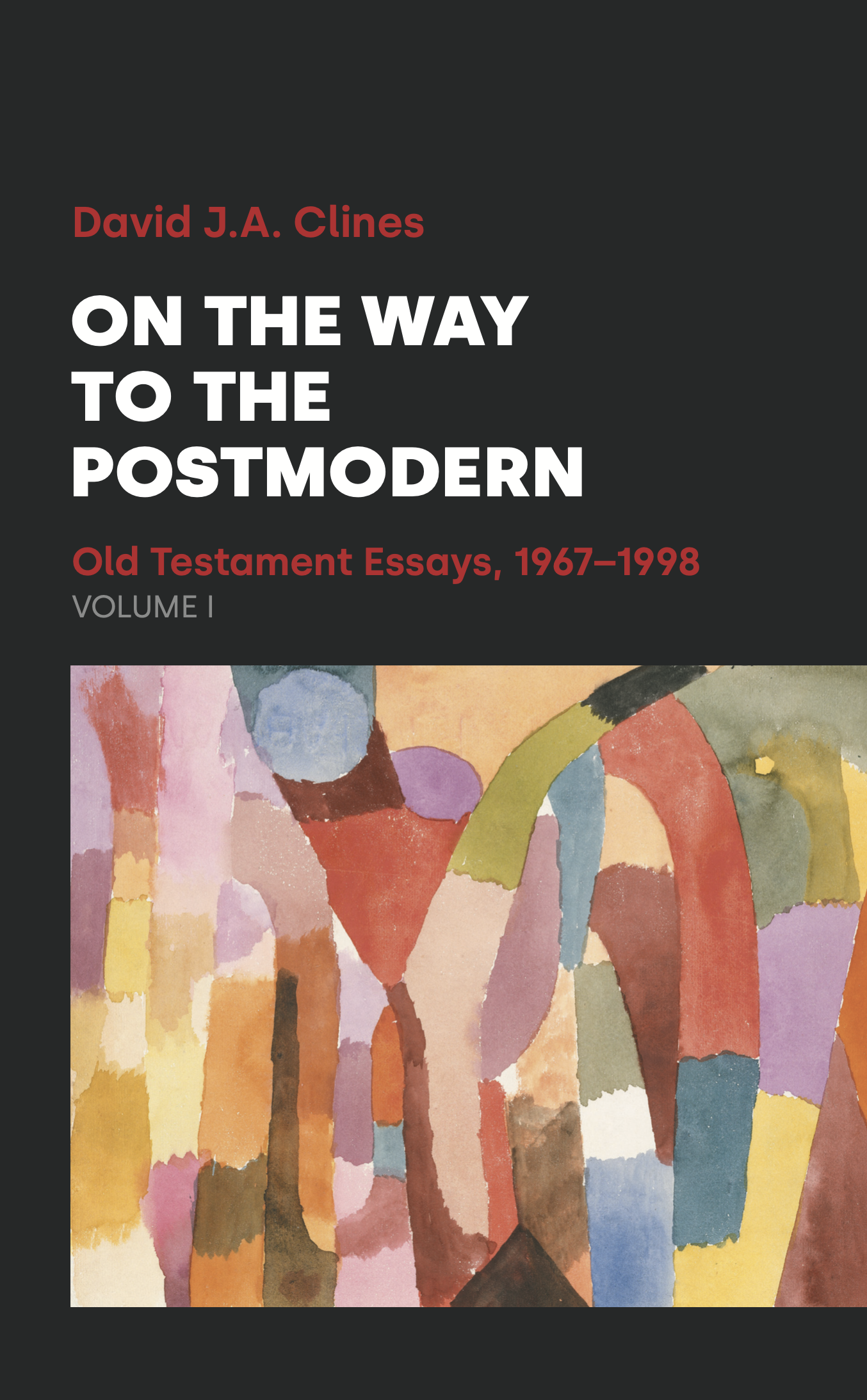
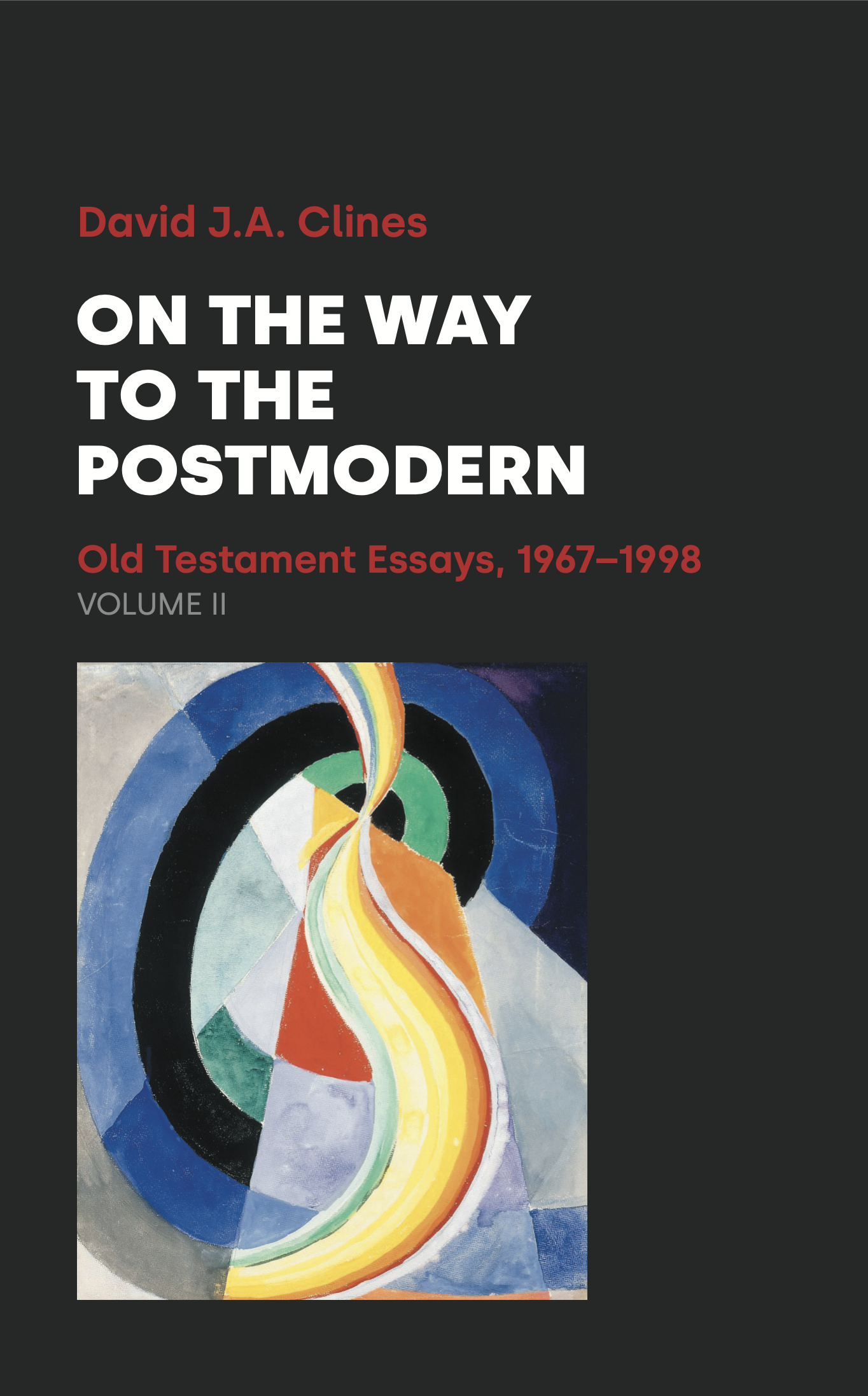
Jeremiah, Volume 1
Jeremiah, Volume 1